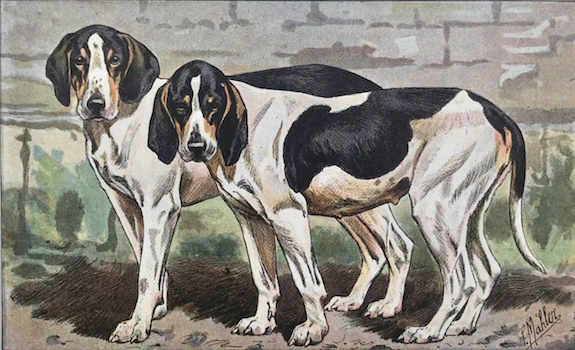
The bulk of hunting breeds in France never step foot in a show ring, and most hunting packs in the country – around 75% – are Anglo-French Hounds. This opening sentence is rather sweeping because “Anglo-French Hound” is less of a particular breed and more of an umbrella term. The fact is that there are seven breeds described as Anglo-Français hounds, and they can be further winnowed down into color and the size of game they hunt. All are recognized by the FCI, and they are:
- Chien Français Blanc et Noir
- Grand Gascon Saintongeois
- Chien Français Blanc et Orange
- Chien Français Tricolore
- Grand Anglo-Français Blanc et Noir
- Grand Anglo-Français Tricolore
- Anglo-Français de Petite Vénerie
While the exact dates of each dog’s development remains unclear (since the 16th century, crossing French hounds with English hounds was commonly done), it was in 1957 that the dogs were separated by origin and color. Each was given its own name with the decision to append “Anglo-Français” to those names to reflect that historically, they were the offshoots of French hounds that had been crossed with English Foxhounds or Harriers. That was also the year that standards were written for some of the breeds, and the year that some were recognized in France. In truth, until the 20th century, French hunters didn’t much care about their dogs’ conformation or pedigrees as long as they could hunt. For that reason, these dogs were called “Bâtards,” or bastards because their origins were mixed. In 1957, they were bastards no more.
Image: From 1907, a chromolithograph by P. Mahler of Anglo-French hounds
